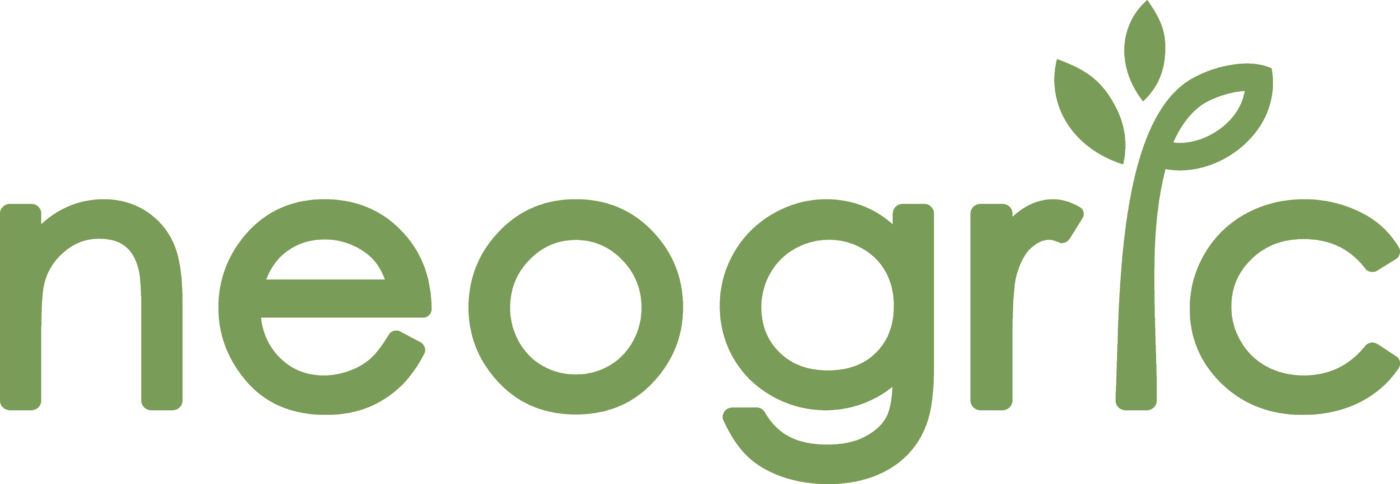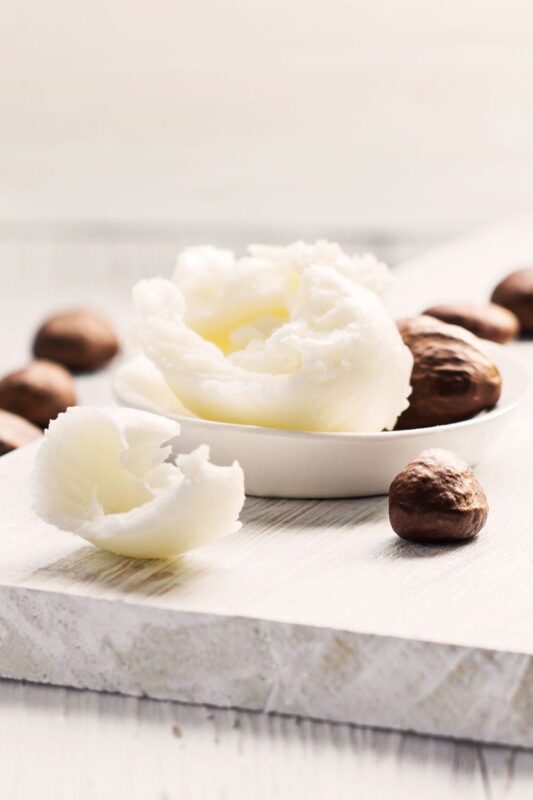What is Shea Butter?
The Shea tree is a perennial crop, predominantly found in the West and the Eastern regions of Africa. A Shea tree takes a considerable period of 11 to about 15 years before it starts to bear fruits but can remain productive for more than 200 years. The fruit is usually 5 cm in length and 3-4 cm in width. It is elliptic and yellow or green with a thick butter-like material. The mucous pericap has a seed in it which is oval or round in shape.
The seed has a big and oily nut from which the Shea Butter is extracted. To extract shea butter from the nut of the tree, the latter needs to go through the process of crushing, roasting, grinding and the separation of the butter from the resulting paste. The paste is kneaded and mixed with water in order for the butter oil to come to the surface. The original color of Shea butter is yellow when raw or unrefined, but changes to white after further refining takes place. Shea butter is a triglyceride in nature.
It is important to state that local women are a very important part of the shea butter value chain. In the past few years, the collection of seeds and the processing described above have been mostly carried out by them. However, in recent years, there has been an increased drive for mechanization, to match the growing supply and standardization needs.
What is Shea Butter Used For?
Shea butter is used mainly in the food industry (accounting for about 90% of total use, according to the Global Shea Alliance). This is especially true of the confectionary and beverage industries where it widely used as a cocoa butter substitute. And since it is edible, an increasing number of homes now use it in their cooking.
That said, Shea butter is also very important to the cosmetics industry. It is used in the production of beauty products:
- Skin and hair moisturizing creams,
- Stretch mark prevention products during pregnancy;
- hair treatment for dry scalp;
- Aftersun products and
- Skin treatment after suffering sunburn;
- Anti-ageing and anti-wrinkle creams;
- Shaving and aftershave creams to reduce skin irritation;
- Fatigue and pain-reduction
- Products for insect bites and stings;
- Baby care products against diaper rash.
- Hair conditioners,
- Lip gloss,
- Soaps,
- And many others.
Soap makers also make use of Shea oil in soap making to make soaps and this increases cleaning abilities. Also, Shea butter can be applied directly to skin and hair that suffer from dryness.
Top Exporting & Importing Countries of Shea Butter
- Nigeria is the leading exporter of Shea butter in the world and the Shea tree is grown in about 21 States of the 36 available in Nigeria.
- China is the leading importer of Shea butter in the world.
Data shows that Nigeria ranks as the highest producer of shea butter globally, despite challenges with production, storage, electricity and others.
- Nigeria with 39.87% (302.96k metric ton)
- Mali – 29.76% (226.09k metric ton)
- Burkina Faso – 18.43% (140.04k metric ton)
- Ghana – 4.18% (31.59k metric ton)
- Ivory Coast – 4.16% (31.59k metric ton)
- Benin – 1.83% (13.91k metric ton)
- Togo – 1.76% (13.39k metric ton)
Shea butter produced in Nigeria has a very good quality and is abundant in quantity, especially during the peak period (June – November). This availability of the raw produce helps international buyers get it at a competitive price.
There is a very large demand for agricultural produce in Nigeria, with many international buyers always looking for products that are cheap and are of the best quality.
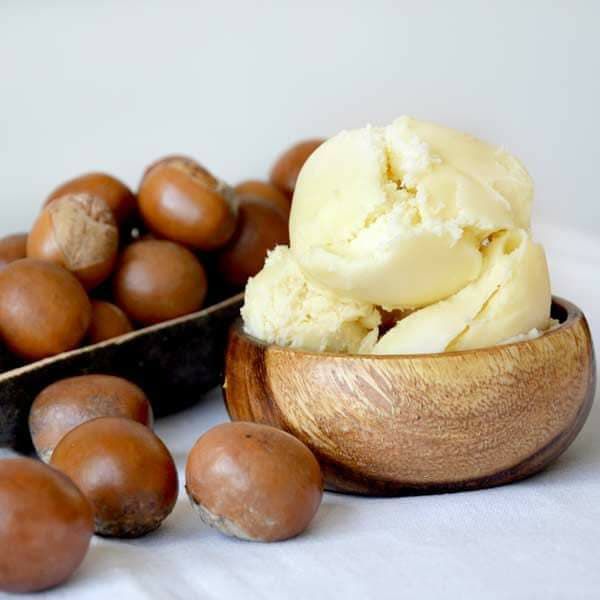
The Difference Between West And East African Shea Butter
In Africa, there are two dominant species of shea nuts the Vitellaria Paradoxa and Vitellaria Nilotica. Vitellaria Paradoxa is dominant and found in West African countries Such as Nigeria, Ghana, Cote d’Ivoire, Burkina Faso, and some other countries. Vitellaria Nilotica is found mainly in Uganda.
As an importer or exporter of shea butter, you should know the differences between both varieties. The West African type has better consistency, works well in most formulations and is not too soft. It also has a higher melting point, greater concentration of sterol and Vitamin A, and a lower concentration of oleic acid when compared with the East African shea butter.
Three Major Grades Of Shea Butter Exported From Nigeria
At the moment, there is no official grading system for shea butter (The African Organization for Standardization is working on one). The only shea-related grading standard was developed by the Global Shea Alliance, but only for shea kernels. However, the following are generally accepted grades of shea butter.
1. The Unrefined Shea Butter
This is extracted directly and has not undergone any processing steps. It is natural and has no additional substance. The natural Shea butter is soft and in varying yellowish color. This is the best of all types to use when it comes to moisturizing skin and hair and also for healing purposes. It has all its natural strength as it has not been altered and diluted by industries.
2. The Refined Shea Butter
This Shea butter has been through some processing thereby losing the natural color, smell, and other natural strengths. It is heated to a very high temperature causing it to bleach and deodorize. This heat will cause the Shea butter to lose some effective ingredient present in it.
3. The Ultra-Refined Shea Butter
At this stage, the Shea butter would have gone through two or more filtering, this will make it change the original composition. The color would have changed to white. It is a major material in the production of many cosmetics products. The filtering processes would have removed some of the natural healthy nutrients, making it less healthy for consumption. Also, some of the additives added during the process can make it unhealthy for consumption’s sake.
In addition to the above, export-grade refined shea butter (useful in the cosmetics industry) is expected to have the following:
- Low Free Fatty Acid (FFA < 1%)
- Low peroxide value (< 2 milliequivalents per kg, mEq/kg)
- Low level of impurity (< 0.2%)
- Low moisture content (<0.2%)
How To Safely Source for Your Produce
If you find the right export company, buying directly from them can make the purchase process easy and stress-free, when compared with doing the sourcing on your own. That said, there are few things to note when dealing with an export company in Nigeria or Africa. The specific requirements for Nigeria are listed below, but they mostly apply to other African countries:
- The exporting company must be registered with the Corporate Affairs Commission (CAC) to make sure the company is registered and permitted to carry out business operations.
- The export company must also be registered with the Nigerian Export Promotion Council (NEPC).
- The company must possess a domiciliary account to accept international payments.
- The company should get all necessary export-related documentation done before the shipment leaves the port of origin. Some of the documents are:
- Certificate of origin
- Bill of lading
- Inspection Certificate (SGS, Cotecna, Bureau Veritas, Intertek, etc)
- Phytosanitary certificate
- Fumigation certificate
Where To Find Reliable Exporters
An important question that still needs to be answered is how to find shea butter/shea nuts exporters in Nigeria. You can use any of the methods listed below:
- Attend trade fairs
- Use search engines like Google, Yahoo, etc.
- Search for agents on Linkedln
- Sign up on trade platforms (e.g. Alibaba, Tradeford, Go4WorldBusiness)
- Neogric – Neogric is one of the reliable shea butter/shea nut exporters in Nigeria. Neogric is rated among the best in the exporting business in Nigeria. The company is not limited to the exportation of raw shea butter/shea nuts alone but can export other agricultural produce ranging from perishables to dry seeds.
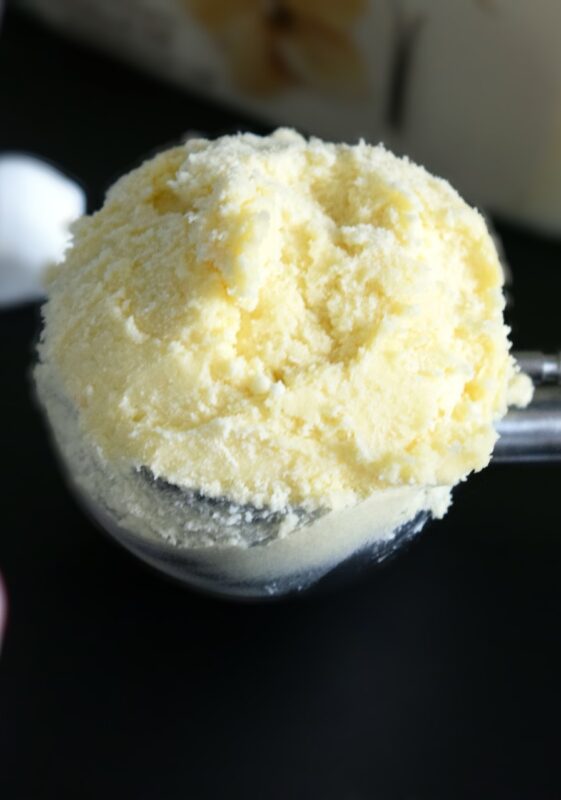
International Price of Shea Butter Per Metric Ton
The unit price ($ per kg) of Grade A Shea Butter in the International market depends on a host of different factors including:
- The grade of the produce (usually the more the processing, the higher the price)
- The price of the raw material
- Age of the Shea butter (this can affect the price)
- The quantity ordered (the greater the quantity, the cheaper you can get it per ton)
- Harvest season (it is more costly when it is out of harvest season).
- Freight & haulage cost
- Percentage of markup
- Import duties
- Distance from the country of origin
- Technology/Infrastructure available in country of origin
- Relationship between the buyer and seller
That said, as at July 2022, Grade A (unrefined) shea butter costs between $2,200 and $2,600 per metric ton (1,000 kilograms) in the international market (i.e. $2.2/kg to $2.6/kg).
How To Pay For Your Produce
You can pay for your kola nut using different methods, but three of the popular ways of paying for your agric produce are:
- Bank (T/T) Payment
- Advance Payment
- Letter of Credit (LC)
Bank Payment (T/T)
Bank payment is also known as T/T, “Telegraphic Transfer” or “Telex Transfer” In other words, it is an international wire of funds from the buyer’s bank to the seller’s bank.
A T/T is technically not the same as a wire transfer, which is often done through the SWIFT network. However, when a seller or supplier asks for a T/T payment, a wire transfer is what they are really asking for.
The wire transfer based on the SWIFT system is the most common payment method in international trade. Typically, it takes 3-5 working days to clear, and generally costs between 25 and 50 USD, depending on your agreement with the commercial department in your bank.
Advance Payment
There are sellers that will demand anywhere from 30% to 50% advance payment, and for good reason. If both parties have done deals in the past, sellers can ask for a percentage of the sales (about 30%) before they ship the produce and they can request for the remaining amount after a scanned copy of the Bill of Lading has been sent to the buyer.
It is the safest option for exporters and it also guarantees that they will have some funds to help with sourcing. It is popular among manufacturers on B2B marketplaces like Alibaba and also with commodity traders.
However, advance payment carries considerable risk for the importer (buyer) because the exporter (seller) might not be under as much pressure to ensure quality checks compared with a stricter form of payment. Some might even disappear entirely.
Having said that, advance payment is very useful and is widely used. For instance, the seller might need to secure the commodity in the face of increased competition. It can also be used when the exporter needs some money for sourcing the produce or for processing raw materials.
The most important thing is for both importer and exporter to build mutual trust by having a track record of successful deals with each other or other known companies.
Letter of Credit
Letter of Credit is an agreement generated by the bank of the buyer, guaranteeing payment once certain conditions are met. It is one of the safest types of payment available to both buyer and seller.
Some of the types of Letter of credit are:
- Commercial Letter of Credit,
- Sight Letter of Credit
- Transferrable or Non-Transferable Letter of Credit
- Standby Letter of Credit (SBLC)
- Usance or Deferred Payment Letter of Credit
- Revocable or Irrevocable Letter of Credit
- Confirmed or Unconfirmed Letter of Credit
- Revolving Letter of Credit
- Green Clause Letter of Credit
- Red Clause Letter of Credit
L/Cs are not totally safe (for either buyer or seller) too. For instance, sellers can ship substandard products or those that are different from the ones agreed upon. In this case, the seller gets paid and the buyer receives good he cannot use.
And speaking of the dangers of L/Cs for the exporter, the conditions in the Letter of credit might be practically impossible to fulfil; if an exporter agrees to such, he might be unable to receive payment. A report stated that of the letters of credit received in the UK, 50% are unworkable while 70% are rejected by the banks for payment.
Shipping & Delivery Terms
When shipping your products, it is important to take note of a few factors:
Order Quantity
For smaller shipments, airfreight is often the preferred option but as the order volume increases, sea freight could become significantly cheaper. Usually when the order is close to a full container load (20 ft), sea freight is used. Despite all these, the Covid-19 pandemic has caused an increase in cost of delivery of products.
Cost of Delivery
When the order is of a large volume, sea freight often turns out cheaper than air freight. In fact, airfreight could be up to 6 times more costly than sea freight if the volume is large enough.
Time of Delivery
Sometimes, time will be more important to the buyer than the cost of delivering the produce. In this case, air freight will be the logical option (as stated above, the cost will be more). But if you have more time as a buyer, you should strongly consider using sea freight.
Incoterms
Incoterms refer to generally accepted shipping and payments terms. For example, buyers that have representatives in the source country or that can negotiate with the freight company can use the Free of Board (FOB) terms, since it gives them more control and can save them some money.
However, if the shipment is small or the buyer doesn’t have an extensive network to effectively handle payment for freight, insurance and port charges, he will be better off choosing the Cost-Insurance-Freight (CIF) payment option. You can find out more about Incoterms here.
Import Shea Butter The Right Way with Neogric
Neogric is a trusted global order fulfilment and sourcing company with deep expertise in the shea butter industry. Our end-to-end supply chain solution makes the export of quality shea butter easy, quick and safe. Whichever region of the world you are, be it Europe, Asia, USA, Canada, Other North/Central American countries, Africa, South America or Oceania, you can reliably order your agric products and we will ensure it is successfully delivered to you.
Below Are Our Shea Butter Trade Specifications:
Origin: Nigeria
Product Type: Shea Butter
Physical Specification: Based On Buyer’s Specification
Quantity: Based On Buyer’s Specification
Price: Negotiable / Metric Tonne
Trial Order: 10 Metric Tonnes
Trade Process: FOB/CIF
Payment Method: 100% irrevocable & confirmed L/C at sight
Shipping Time: 15 to 25 days after confirmation of L/C
Loading Port: Lagos, Nigeria
Specifications
Type: Grade A 100% Natural, Organic, & Unrefined
Colour: Beige/White/Yellow
Inspection: SGS/Cotecna/Bureau Veritas/Intertek
Expected Shipping Documents
– Bill of Lading
– Certificate of Origin
– SGS Inspection Certificate
– Phytosanitary Certificate
– Fumigation Certificate
– Commercial Invoice
– Packing List
To Contact:
Tel: +2348147860157
Email: neo@neogric.com
WhatsApp:
Place Your Shea Butter Order
Click the button below and tell us about your Shea Butter needs. We will be glad to help you export Shea Butter based on mutually agreed terms.
